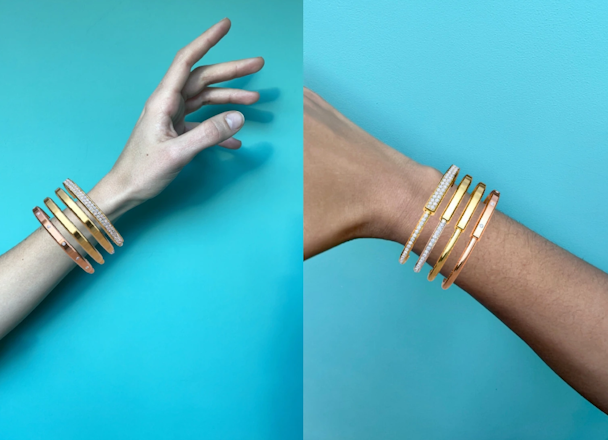‘94% increase in conversion rates’: Snap on how ecommerce tech is boosting top brands
Huge brands are working with Snap’s new ray-tracing and in-camera tech. Its UK exec explains the wins it has seen since introducing it.

Snap is using ray tracing – high-end graphics tech – to supercharge mobile ecommerce for luxury brands / Image provided by Snap
Ray tracing is one of the must-have features in computer-generated graphics. The ability to calculate and display the interplay of light sources and objects in 3D space, in real-time, has been the key selling point for high-powered PCs and game consoles. Now, Snap has brought that tech to its e-commerce offering to revolutionize how luxury items like jewellery are bought and sold online.
One of the primary ways in which ray tracing is used in graphics is in generating real-time reflections. Luxury products – jewellery in particular – that has the potential to replicate the in-store conditions developed over centuries to show off the goods in the best possible environment.
Tiffany & Co, for example, has already signed up to launch the first Lens built with ray tracing, allowing users to try on Tiffany Lock bracelets using AR and purchase them directly within the app.
Fintan Gillespie is director of UK large client solutions for Snap. He explains: “What that experience actually leads to in the data is a 94% increase in conversion rate online when users are exposed to augmented reality trials in the path to purchase.
“And not only that – in the research that we’ve done is that it also leads to up to a 66% reduction in return rates.”
It is, as he explains, an iterative evolution of Snap’s mobile e-commerce offering, one that ultimately adds up to huge changes for the retailers looking to use it. Most importantly for Snap, he believes that the tech is a key differentiator from rival e-commerce platforms like Amazon. He states that while Amazon integration in the web allows it to present consumers with a static image of products as they travel around the web, Snap’s tech allows for a more immediate opportunity for conversion.
“We believe that that is a truly differentiated experience in terms of advertising versus Amazon showing a video ad or showing a static image of a pair of goggles.”
Whether mobile and home PC e-commerce have achieved parity in terms of tech is hard to judge. While ray tracing may be possible on mobile devices now, the difference in utility between camera-led devices and PCs means they are used for different purposes in the e-commerce process.
Sticking points
For Snap, the opportunity for retailers is currently limited by the amount of 3D digital versions of their products available. In order to take advantage of the tech to the fullest, retailers’ entire current catalog should be digitized for the purposes of virtual try-ons. To that end, Snap is attempting to streamline the process – even if it means becoming invisible from the consumer’s point of view.
Gillespie explains that, even if they're not using ray-tracing, brands are using Snap's in-camera tech to boost their ecommerce proposition: “So the likes of Ralph Lauren and Puma are already integrated. If you go to Puma’s app in the US, you can get prompted to point the Puma app at your feet. And you can try without ever going into Snapchat; everything’s powered in the background by us. Even if the user has never been to Snapchat or never downloaded Snapchat, it’s powered by us and Puma can leverage that.”
He cites the examples of Lego, JD Sports and Samsung as brands that have seen an uplift through the use of digital recreations of their products.
That digital recreation of items is also empowering tech providers like Unity with an e-commerce opportunity. Where once the Unity platform was primarily known for gaming, it is increasingly investing in tech that replicates items and individuals for use in retail. It recently invested in Ziva, which provides the tech for synthetic humans. Its own research – and that of Meta – has demonstrated that users in many cases actually prefer interacting with synthetic humans and items, provided they are made aware of the artificiality.
In addition to ameliorating the issue of returns – high up DTC retailers’ priority lists for the year – Snap is investing in tech that solves other retailer concerns other than simply converting users. Gillespie notes that the platform is using its tech in a retail setting to display information about the provenance and origin of items, which can serve to prove a brand’s sustainability bona fides.
He says: “AR can actually go further. It’s not just about trying it on, it could actually pop out to things that tell you about where the garment was made, or what materials it's from. When we query our Gen Z audience, they care about brands with a sustainability-focused purpose.”
As the tech gap between mobile and home e-commerce closes, the use cases for that tech are diverging. While tech like ray tracing is possible on platforms like Snap, then, the larger opportunity for the platform and tech providers like Unity lies in using that tech to provide real-time interactions with brands that are not possible on home devices.

